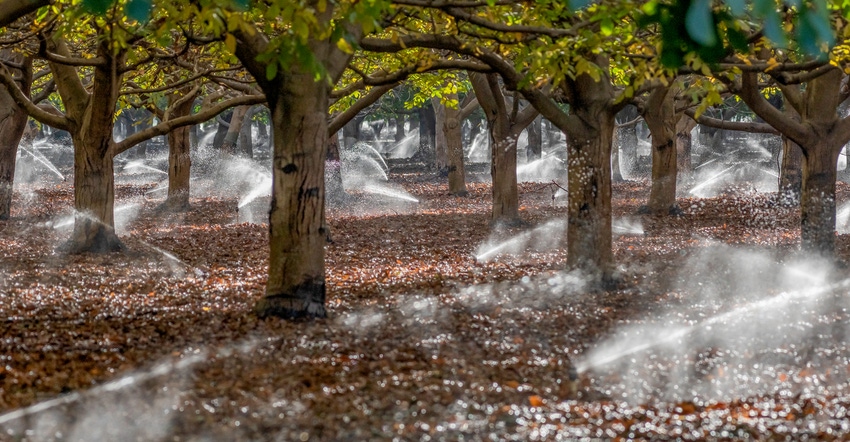January 5, 2022

The increasing drought in the West is driving farmers and companies to look for new ways to manage water, to maintain crops and income. Ceres Imaging has been involved in precision irrigation and has introduced a new irrigation optimization product designed to make precision irrigation easier.
The key is a multipronged approach to bringing in data to make water-use decisions.
"Part of the big problem that growers have is that when water is as scarce as it is now, but it is such an important input, you need to be able to effectively manage and optimize the irrigation you have," says Nikki Tubacki, product manager, Ceres Imaging.
She explains that to maximize irrigation use, farmers have to be able to have an eye on a range of different inputs, and to understand how their fields are doing across time. The Ceres Imaging approach is designed to bring in aerial imagery, but merge that information with on-the-ground sensor input and bring it all to one place. "We will bring all of that data into one place, where you can effectively and easily monitor it at all times," Tubacki says.
More than one company
Tubacki explains that Ceres Imaging is integrating with a range of partners and vendors that have deployed field sensors and are providing information to the cloud. "We can show back that data in the Ceres app alongside our imagery," she says. "
She shares that a farmer might have access to a soil moisture monitor along with Ceres Imaging information. This data can provide in-field area specificity when managing water. Combining that sensor information with imagery can help determine crop health, highlighting stressed areas that may need more water. The sensors can also determine if the water is penetrating to the root zone, where it's needed.
"If it's not actually reaching the root zone for your crops, you could change your irrigation practice," Tubacki says. "It's combining all of this kind of information that helps you address irrigation needs."
The optimization suite pulls together that range of data and can send alerts when the information shows that something is amiss in the field.
"When our analysts analyze the imagery from the flights, they will also use the sensor data to point out areas that may need the grower to go and take another look at, or perhaps some changes in your irrigation planning," she says.
How the imagery works
This technology is best in orchard crops, and Tubacki explains how it is deployed. The imagery from planes gives high-resolution results, providing a look at the fractional cover for each crop in the field.
With that information, the company can calculate the crop coefficient value for every single acre using enough fractional cover for the kind of crop, the age of the crop and all of those factors that play into it, she explains. That information is then used to develop irrigation use programs for each field, by zone.
"This year, the cost was $4.50 per acre, and we're offering this for citrus trees, nuts and vines," Tubacki says. "We'll also be doing some more research to expand that in upcoming seasons."
While not ready for prime time in the Midwest row crop field, this optimization suite shows how multiple data points can be pulled together to achieve a specific result — in this case, managing irrigation water.
You can learn more at ceresimaging.net.
About the Author(s)
You May Also Like






